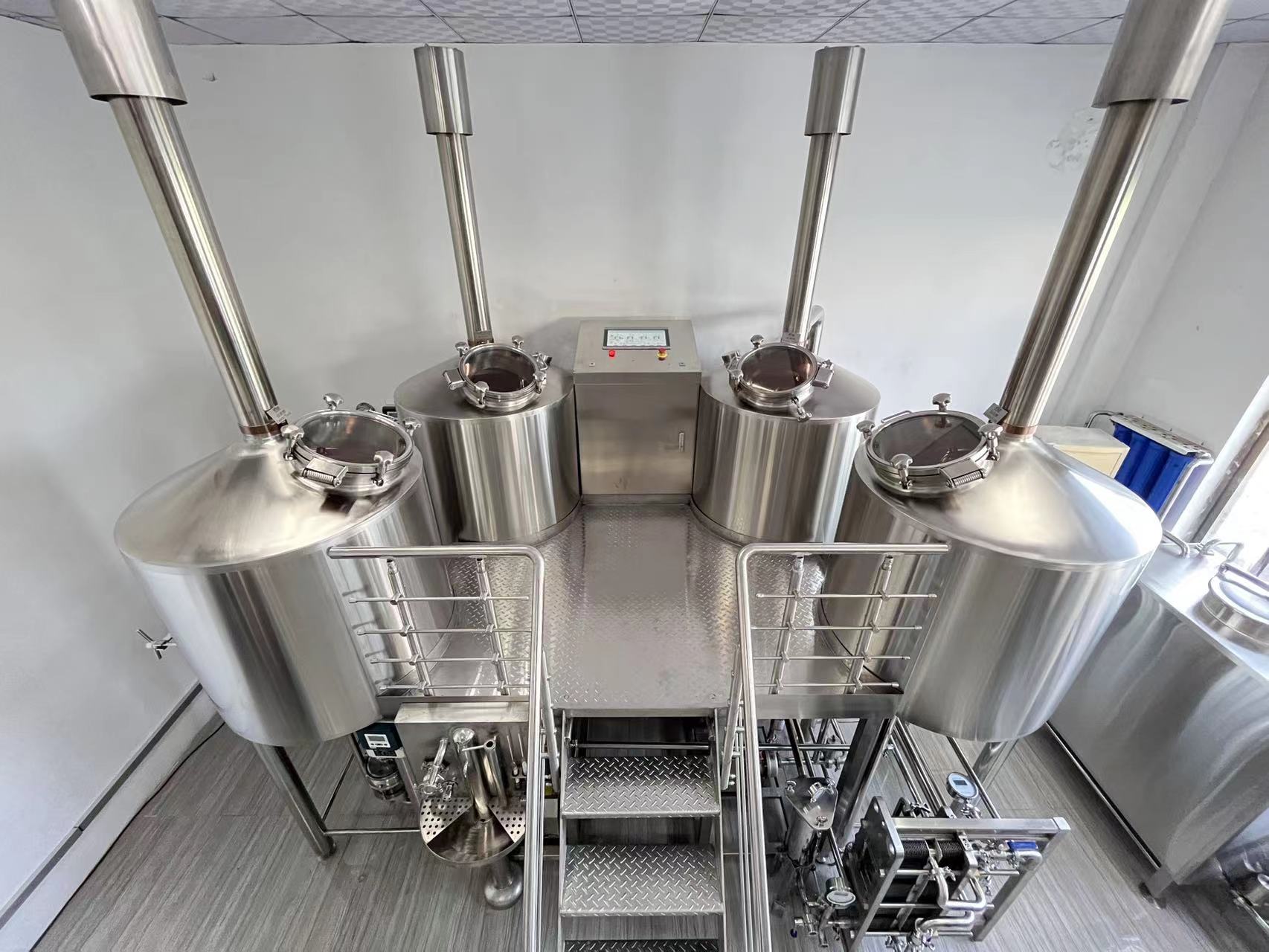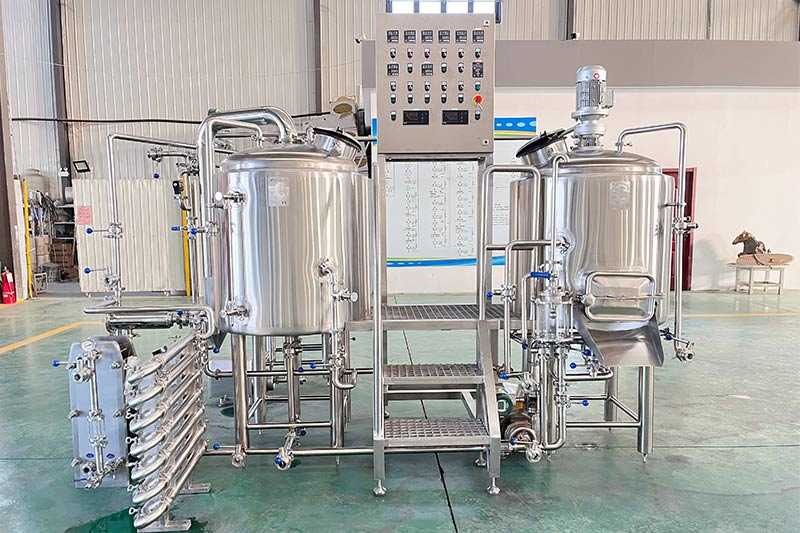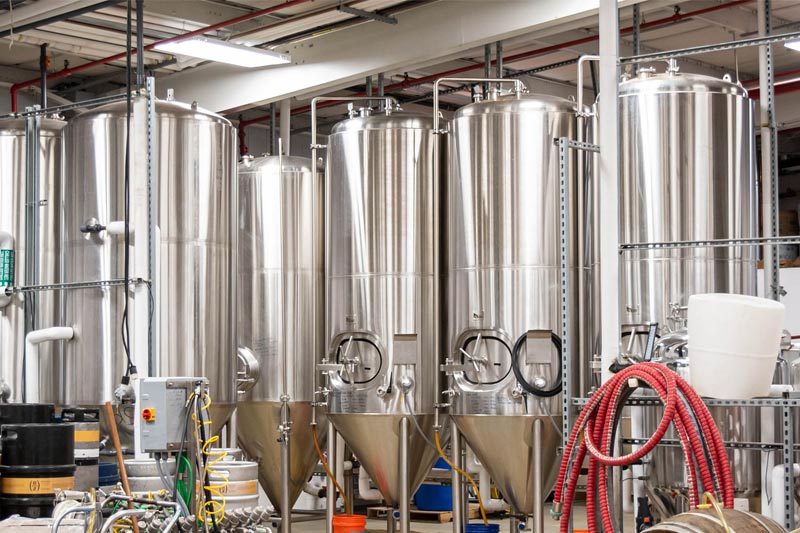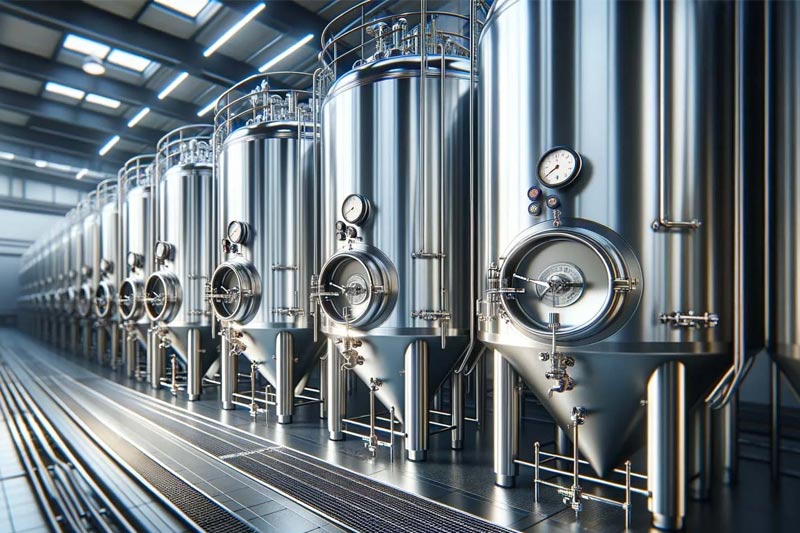Imagine pouring a crisp, refreshing glass of beer right from your own tap at home. With the right draft beer equipment, this dream can become a reality. This article explores everything you need to know about brewing and dispensing your own beer, bringing the brewery experience straight to your doorstep.

Why Invest in Draft Beer Equipment?
Investing in draft beer equipment opens up a world of possibilities for beer enthusiasts:
- Freshness: Enjoy the freshest beer possible.
- Customization: Create unique brews tailored to your taste.
- Cost-Effective: Save money by brewing at home.
- Entertainment: Impress friends and family with your brewing skills.
As a home brewer, having the right equipment transforms your brewing experience, making it more efficient and enjoyable.
Internal Link: Explore Commercial Brewery Equipment for larger scale operations.
What Equipment Do You Need to Brew Beer at Home?
Starting your home brewing journey requires specific equipment:
Brewing Kit Essentials
- Brew Kettle: A large pot for boiling your wort.
- Fermenter: A vessel where fermentation takes place.
- Airlock and Stopper: Allows CO2 to escape without letting air in.
- Thermometer: Monitors temperature during brewing.
- Hydrometer: Measures the beer’s alcohol content.
- Sanitation Supplies: Keeps your equipment clean and free from contaminants.
Additional Supplies
- Wort Chiller: Cools the wort quickly after boiling.
- Kegs and Couplers: For storing and dispensing your beer.
- Tubing and Clamps: Used for transferring beer between vessels.
- Yeast and Grains: The fundamental ingredients for brewing.
Having a comprehensive kit ensures you have all the supplies you need for successful brewing.
Internal Link: For professional setups, check out our Beer Brewing Systems.
How to Choose the Right Brew Kettle
The brew kettle is the heart of your home brewing equipment.
Considerations When Choosing a Kettle
- Size (Gallon Capacity): Common sizes range from 5 to 15 gallons.
- Material: Stainless steel is durable and easy to clean.
- Features:
- Volume Markings: Helps measure liquid easily.
- Built-in Thermometer: Monitors temperature directly.
- Valve (Spigot): Facilitates easy transfer of wort.
Why Stainless Steel?
- Durability: Resistant to dents and scratches.
- Heat Conductivity: Provides even heating.
- Sanitation: Easy to sanitize, preventing contamination.
Selecting the right brew kettle enhances your brewing process and improves your beer’s quality.
Internal Link: Learn more about our 2 Vessel Brewhouse options.
Understanding Kegs and Couplers
Storing and dispensing your beer requires knowledge of kegs and couplers.
Kegs
- Types:
- Cornelius (Corny) Kegs: Common in home brewing.
- Ball Lock and Pin Lock: Refer to the connection types.
- Sizes: Typically 5-gallon capacity for home use.
Couplers
- Function: Connect the keg to the dispensing system.
- Types: Match the keg type (e.g., ball lock couplers for ball lock kegs).
- Importance: Ensure you have the correct coupler for your keg to prevent leaks.
Using the right keg and coupler combination is crucial for properly dispensing your homebrew.
Internal Link: For fermentation options, see our Conical Fermenters.
The Importance of Fermenters in Beer Brewing
The fermenter is where the magic happens, turning wort into beer.
Types of Fermenters
- Buckets: Affordable and easy to use.
- Glass Carboys: Airtight and allows you to watch fermentation.
- Stainless Steel Fermenters: Durable and easy to clean.
Features to Consider
- Airlocks: Allows gases to escape while keeping contaminants out.
- Valves and Spigots: Ease of transferring beer without siphoning.
- Size: Should accommodate your batch size, typically at least 6 gallons to prevent overflow.
Proper fermentation is key to brewing great beer, making the fermenter an essential piece of equipment.
What Is a Wort Chiller and Do You Need One?
A wort chiller rapidly cools your wort after boiling.
Benefits of Using a Wort Chiller
- Prevents Contamination: Rapid cooling reduces the risk of bacterial growth.
- Improves Clarity: Helps proteins settle out, leading to clearer beer.
- Enhances Flavor: Minimizes off-flavors caused by long cooling times.
Types of Wort Chillers
- Immersion Chillers: Coils submerged directly in the wort.
- Counterflow Chillers: Wort runs through tubing cooled by water.
- Plate Chillers: Wort flows between metal plates cooled by water.
Using a wort chiller streamlines the brewing process and improves your beer’s quality.

Internal Link: Discover professional-grade Beer Fermentation Tanks.
Essential Home Brewing Supplies
Beyond the main equipment, certain supplies are vital for successful brewing.
Must-Have Supplies
- Yeast Nutrients: Promote healthy yeast fermentation.
- Cleaning Agents: Keep your equipment sanitized.
- Hoses and Tubing: For transferring liquids.
- Clamps and Fittings: Secure tubing connections.
- Thermometers and Gauges: Monitor temperature and pressure.
Sanitation
- Importance: Prevents contamination and off-flavors.
- Products: Use no-rinse sanitizers for convenience.
Having the right brewing supplies ensures a smooth brewing process and delicious results.
How to Properly Dispense Draft Beer
Dispensing your beer correctly enhances the drinking experience.
Draft System Components
- Keg: Stores the beer under pressure.
- CO2 Regulator: Controls the flow of CO2 gas.
- Beer Lines and Tubing: Connects the keg to the faucet.
- Faucet (Tap): Where the beer is poured from.
- Tap Tower: Houses the faucet above the counter.
Steps to Dispense
- Connect the Coupler: Attach it securely to the keg.
- Adjust the CO2 Pressure: Typically between 10-12 PSI.
- Open the Faucet: Pour at a slight angle to reduce foam.
- Enjoy Your Beer: Serve at the right temperature for optimal taste.
Properly managing your draft system ensures your homebrew tastes great every time.
Internal Link: For filling solutions, explore our Keg Filling Machine.
Maintaining Your Draft Beer Equipment
Regular maintenance keeps your equipment in top condition.
Cleaning Tips
- After Each Use: Rinse equipment with warm water.
- Deep Clean: Use cleaning agents for thorough sanitation.
- Draft Lines: Clean beer lines regularly to prevent buildup.
Equipment Checks
- Inspect Fittings: Ensure all connections are tight.
- Monitor CO2 Levels: Replace tanks when low.
- Check for Leaks: Regularly inspect for any gas or beer leaks.
Proper care extends the life of your draft beer equipment and maintains beer quality.
Internal Link: For advanced setups, consider our 4 Vessel Brewhouse.
FAQs About Draft Beer Equipment
Homebrew equipment is designed for smaller batches (typically 5 gallons), while commercial brewing equipment handles larger volumes and includes advanced features. Commercial Brewery Equipment is suited for professional brewers.
A pump helps transfer liquids efficiently, especially in larger setups. It’s beneficial for moving wort from the kettle to the fermenter without manual lifting.
Ensure the CO2 tank and regulator are compatible with your system. Using the right equipment prevents leaks and maintains proper pressure.
Replace tubing every 1-2 years or if you notice cracks or stiffness. Regular replacement ensures cleanliness and prevents off-flavors.
Stainless steel is more durable, easier to sanitize, and doesn’t retain odors, making it a preferred choice for many brewers.
A hydrometer measures the sugar content in your wort, helping you calculate the alcohol content of your beer.
Summary: Cheers to Homebrewing
- Draft beer equipment allows you to brew and enjoy beer at home.
- Key components include a brew kettle, fermenter, kegs, and couplers.
- Stainless steel equipment is preferred for durability and sanitation.
- Using a wort chiller improves beer clarity and flavor.
- Proper dispensing involves understanding your draft system.
- Regular maintenance keeps your equipment in top shape.

Internal Links for Further Reading:
- Enhance Your Brews: Beer Brewing Equipment
- Explore Fermentation: Conical Fermenters
- Professional Solutions: Beer Fermentation Tank
- Packaging Options: Bottle Filling Machine
- Expand Your Brewery: Microbrewery Equipment
Important Points to Remember
- Investing in quality draft beer equipment elevates your home brewing.
- Choosing the right brew kettle and fermenter is essential.
- Understanding kegs, couplers, and dispensing systems ensures perfect pours.
- Regular maintenance and sanitation keep your equipment performing well.
- Utilize resources and professional equipment suppliers to improve your brewing experience.
Brewing your own beer is a rewarding hobby that combines science and creativity. With the right equipment and supplies, you can craft delicious beverages to share with friends and family. Start your brewing journey today and embrace the joy of homebrewing. Cheers!

